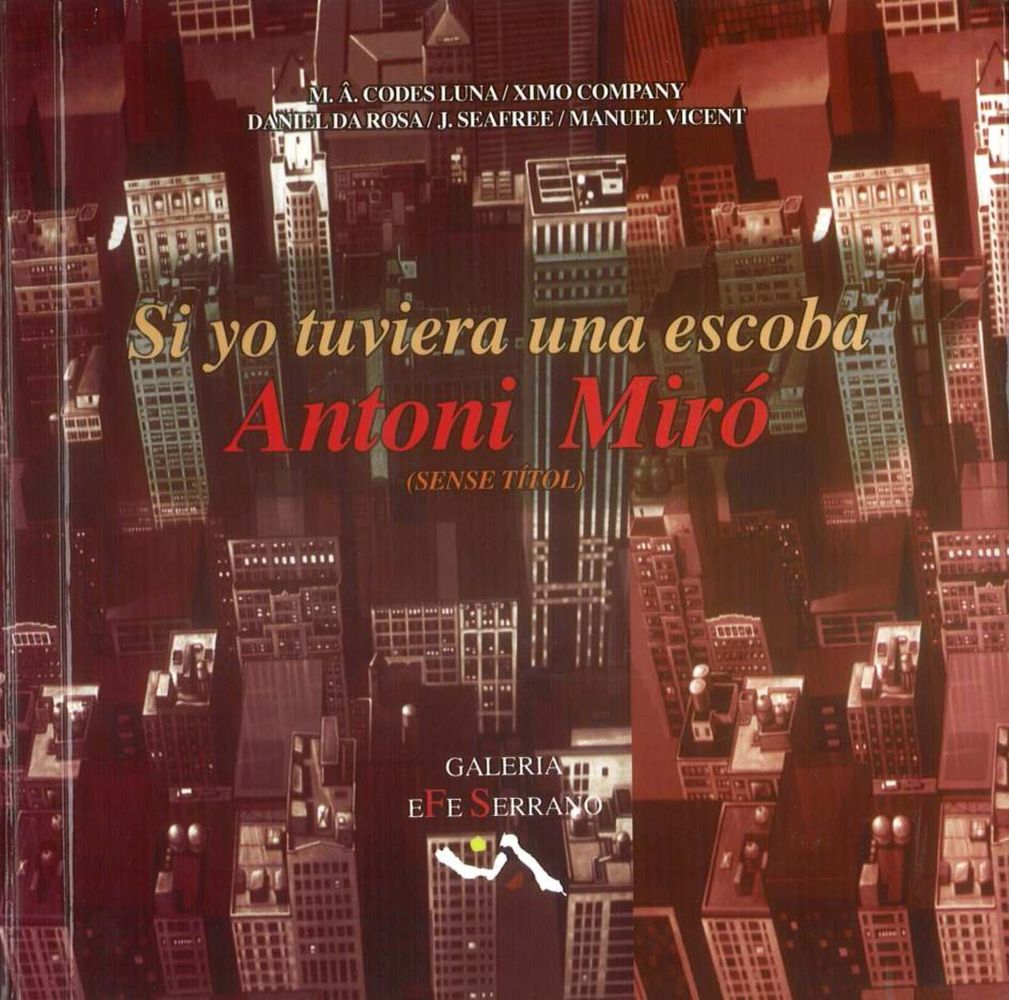The great commitment of Antoni Miró
Miquel-Àngel Codes Luna
When Antoni Miró (Alcoi 1944) decided to dedicate himself to painting, he committed himself at the same time to the society in which he forms a part. The order of factors, he assures us, does not change the product, because the relation of both realities, in the case of Antoni Miró, results in a painting loaded with content and visual impact, in equal parts.
From the first expressionist stutterings, Antoni Miró clearly leaned towards a type of painting with message, that is, a painting that emerged in reaction to a rather depressing politico-social context that he himself and his fid ends— among them the singer-composer Ovidi Montllor—hated, of course. A nonconformist attitude that he would show at first collectively with the Grup Alcoiart (1965— 1972), sharing the tendency with other Valencian contemporary artists who decided to group together to show their art of protest (in 1973 Miró also collaborated in founding another collective, the Grupo Denunzia, in the city of Brescia). By the end of the 1960s Miró had established the basis of his particular social realism, which had little to do with the dogma that ruled the similarly-named artistic movement. This is possibly because Miró substituted the direct message for a gesture of complicity with the spectator, including, in his broad iconic repertory, numerous images totally rooted in the collective psyche, based on mass culture and universal art history (the excellent series “Pinteu Pintura” is an example of this change).
Antoni Miró is so eager to communicate by means of his painting that there is no work in his vast collection that doesn’t lend itself to double meaning. The interpretation is multiple and obligatory because the act of looking at a painting of Miró’s converts one into a critic, and not only of art: the images he creates appeal to one’s conscience, many times accomplished with subtle irony. This intention of incessant dialogue in his work translates formally into a play of combinations in which contrast, deformation and repetition of images are of great importance. This iconic superposition, among other things, leads to an immediate secondary effect: that each thematic series created by Miró contains the seed of the following one, and so on successively. So that, although the standard of social compromise is always high, the roads along which Antoni Miró’s artistic endeavour takes him are always open, so open that they reach the reflection of his own profession, nature vs. progress, or eroticism. In the first case he recreates the inheritance of great painting masters, especially Spaniards (Velazquez, Goya, Dalí...), and in the second case Miró becomes more critical, focusing the subject from an ecological point of view, denouncing how the developmental furore currently going on is ruining our natural patrimony (to be seen in the series entitled vivace “Sota l’asfalt està la platja”—“Under the asphalt lies the beach”). As for eroticism, although it is present throughout his trajectory, in “Suite eròtica” (1994) the theme is monographic.
At last, I would like to reproduce some words with which the writer Isabel-Clara Simó defined Antoni Miró (in the catalogue for the exhibition Miró had at the Museo de la Solaridad “Salvador Allende” in Santiago de Xile), which have the added value of arising from the profound friendship uniting the two creators: “Sometimes a painter, Antoni Miró, for example, is a painter because he was born so, because he carries in the hidden folds and twistings of the soul the spirit of painting. A spirit stronger even than the people he loves, stronger than he himself. So, the question ‘Why does Antoni Miró paint?’ followed by the question ‘Why does he paint so much?’ loses significance. Because the answers to both are the same: it is inevitable. He paints because he is a painter, indestructible tautology that is self-explanatory.”
